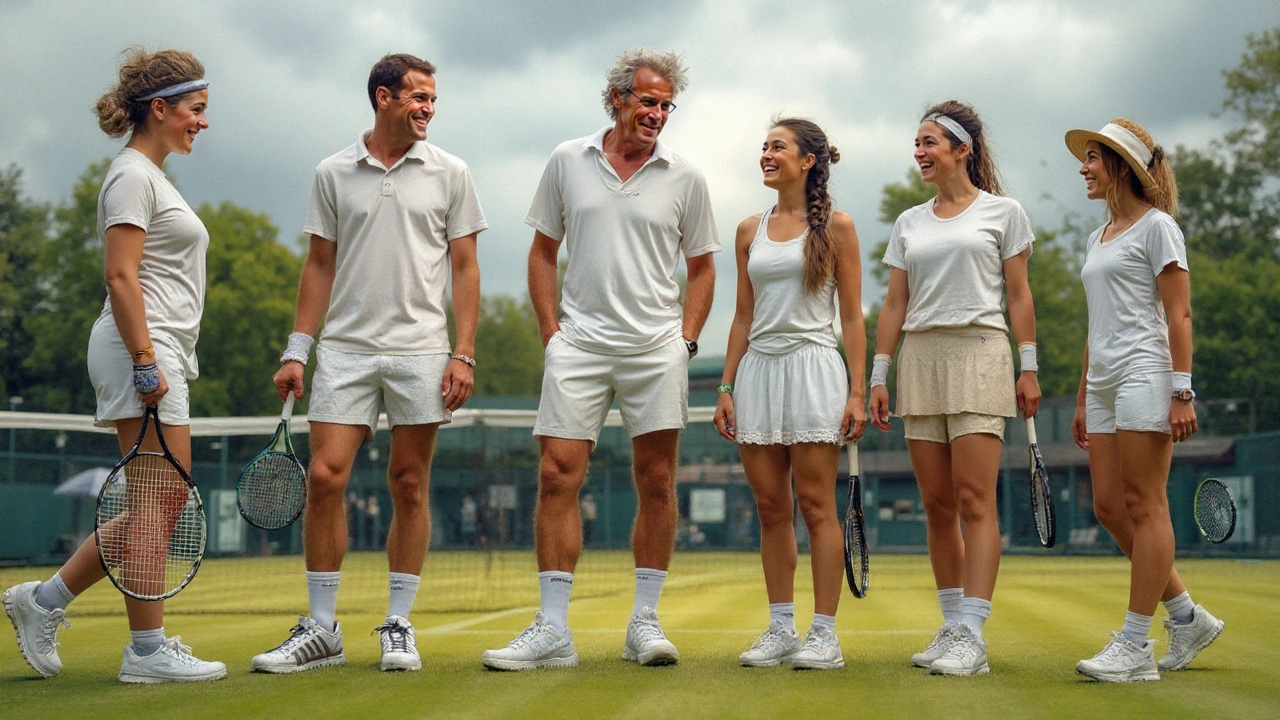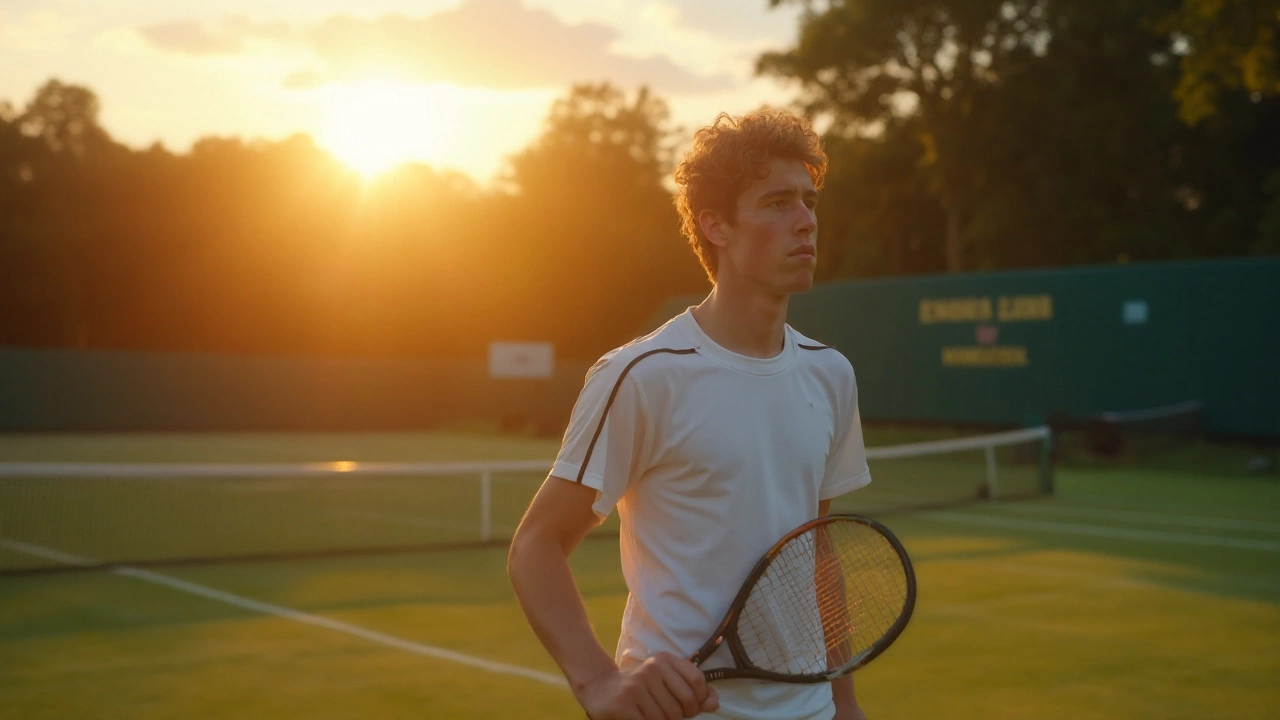Back in 1990, a 14-year-old Jennifer Capriati hit the courts, smashing her way into the pro tennis scene and leaving jaws on the floor. Fast-forward a few decades, and you’ll see people of all ages—teens to players in their forties—grinding through tournaments with all they've got. But is there actually an age cap on when you can pick up a racket for real glory? Or is the clay just as open to teens as it is to tennis veterans pushing gray hair and seasoned knees? Let’s kick off with a simple truth: there’s no magic number that says “game over” for pro tennis. But, as you might guess, the real story is way more complicated than just a yes or no.
The Truth About Minimum Age Rules in Professional Tennis
The ATP (for men) and WTA (for women) rulebooks have always been obsessed with protecting up-and-coming talent. Remember the Capriati story? Her raw talent drew crowds, but her early burn-out pushed tennis organizations to set boundaries for kids jumping straight into the pro circus.
For the WTA, there’s a strict set of age eligibility rules. No matter how insane your forehand is, you can’t play a regular WTA event before you hit 14. Even after your 14th birthday, you’re capped at eight pro tournaments (including wildcards) until you turn 15. From 15 to 16, the cap slowly rises. The idea is to avoid frying young minds and bodies with endless travel and spotlight pressure. The system is so detailed, it lays out the tournament quotas year by year until you turn 18. Then—finally—you’re unleashed, no event cap, all doors open. Tennis is looking out for its youngest stars so they don’t burn out or buckle under the weight of early fame.
ATP is a little more laid-back but has similar protections. There’s no strict quota on matches, but to get into ATP events, you need to earn points and snag rankings—something impossible without cutting your teeth on junior and lower-level circuits first. Also, no ATP event will look at someone under 14. Sure, tennis phenoms like Carlos Alcaraz climbed fast, but every step was measured by ranking points before setting foot in a main draw. Unlike WTA, there’s less hand-holding, but young male players can’t leapfrog the system.
Grand Slam events—the big fish—generally follow the same guidelines. Think about Coco Gauff, who stunned everyone at Wimbledon at 15. She had the WTA age eligibility structure to thank for even getting her shot. In practice, Slams always follow their own minimum age limits, matching the WTA and ATP guidelines. If you love the game at 12, you’ll mostly be stuck playing junior events and getting hungry. The pro world, for good reason, makes sure you’re truly ready before throwing you to the lions.
Is There an Upper Age Limit for Tennis Players?
This is where things get interesting. Unlike football or gymnastics, where 30 feels ancient, tennis is stubbornly ageless. The ATP and WTA have zero upper age caps. No document out there says you have to hang your racket once you hit a certain birthday. If your body holds up, your ranking stays solid, and you can keep winning matches, you’re in.
Look at these legends. Ken Rosewall was 43 when he played a Grand Slam final. Serena Williams, at 40, was still slamming her way into the later rounds of Majors in 2022. Roger Federer? His Wimbledon run in 2021 wowed people at 39. Martina Navratilova came back—aged 46—to win Grand Slam doubles titles. If you’re thinking about age limits, these folks just laugh and play another set. In doubles, the record skews even older. Daniel Nestor won a men’s doubles Grand Slam at the age of 40; Leander Paes took a mixed doubles slam at 42. You could throw in John McEnroe waltzing to a Grand Slam doubles showdown at 47!
Physically, though, let’s be real—tennis is brutal. Reflexes slow. Muscles recover slower, aches last longer, and the injury list grows with every passing season. The average age for singles champions? These days, it’s creeping up; Novak Djokovic held the top spot at 36. But, most pros call it a career somewhere between 30 and 35. The last ranking stats for 2023 had the ATP top 100 at an average age of 27.5, with the WTA top 100 at just under 26. But that’s an average—it hides those outliers pushing the envelope.
If you want to chase pro goals in your forties, no rulebook will stop you. You’ll just need to stay healthy, have the stamina, and—let’s face it—the bank account to manage the grind. ATP and WTA points expire every 52 weeks, so if you can’t keep your body and serve sharp, your ranking drops and wildcards become your only lifeline. Not everyone is Roger Federer’s knees, but you never officially “age out.”
Mature players sometimes reinvent themselves to last longer—focusing more on doubles, selecting tournaments carefully, and dialing in fitness routines. Some even return from “retirement” for the fun of it (think Kim Clijsters—came back at 36 after a decade out!). For rec players who dream about the pro life, don’t let anyone hand you a fake “age limit.” As long as you’ve got the fight and the legs, technically, the sky’s still the limit.

How Does Age Affect a Pro Tennis Career?
Experience is gold in tennis, but biology doesn’t lie. Speed, flexibility, and raw recovery just aren’t what they were at 19 the older you get. Some players compensate with insane tactical brains—Andy Murray in his latter years is basically a human chess computer. Rafael Nadal and Novak Djokovic keep stretching the age boundaries by turning recovery and injury management into an art form. It’s a science of sleep pods, nutritionists, rehab teams, and travel hacks. The recovery game, believe it or not, is almost as important as your serve once you’re over 30.
The last few years saw the rise of the “Gen Z” tennis stars like Carlos Alcaraz and Iga Swiatek, zooming into No. 1 spots before they could hit a legal drink in some countries. They win with speed, freshness, and the reckless fearlessness of youth. But players in their late 30s, early 40s—Nadal, Djokovic, Venus Williams—win with patience, anticipation, and deep tactical play.
If you pay attention to rankings, the top 10 churns faster for women. Men seem to hang around a little longer at the top, but when it goes, it goes fast. One legit tip for anyone thinking of beating biology? Injury prevention is everything. You’ll see pros fading out early—sometimes by 26 or 27—because of chronic injuries more than “old age.” Constant travel, hard landings, and sheer match volume do a number. Smart veterans literally plan their years around injury prevention—picking surfaces, tournaments, and even partners in doubles. The old school “play every week” mindset is gone. Today’s older pros take ice baths, fly with a fleet of physios, and sometimes skip a Slam if it means surviving for the next season.
Even younger pros are on careful routines to stretch careers. The WTA’s age eligibility system is actually praised—without those enforced boundaries, burnout and career-ending stress would probably be a lot more common. It’s a balance between letting talent shine and making sure nobody flames out after two seasons in the spotlight.
Some fans complain when seasoned names hang around “too long,” hogging the limelight from rising stars. But honestly, the old guard brings drama. Every round Roger or Serena survive in their twilight years packs stands and glues eyes to the screen. Tennis thrives on this age mix—the audacious youth and the relentless veterans, both breaking age myths in real time.
Tips for Aspiring Tennis Players of All Ages
If you’re looking at this and thinking, “Am I too late?” or “Could my kid actually go pro?”—here are a few straight-up things to chew on:
- Start Early, But Don’t Panic: Greats like Federer, Nadal, and Sharapova started swinging rackets almost as soon as they could walk. But Stan Wawrinka didn’t break top 10 until 28. Late bloomers are real. If you’re 14 or younger, get into junior events, national federations, and tournaments. Train technique and mental toughness—points, not just results, matter early on.
- Know the Age Rules: For a shot at the big leagues, play within the ATP and WTA minimum ages. You’ll need to slog through junior events, ITF tournaments, and challenger circuits before the spotlight finds you. Parents and coaches should know the event caps—get familiar with those yearly tournament quotas and keep the pressure healthy, not crushing.
- Prioritize Health: Career longevity is all about the body. Flexibility work, sleep, injury prevention, and smart scheduling are not optional—they’re what separate rising stars from burned-out talents. Older players succeed by listening to their bodies and skipping events when they have to.
- Embrace Reinvention: Your game will change as you age. Speed and recovery fade, but tactics, anticipation, and serve placement grow. Doubles can extend your career. Even if you “retire” from singles, you can still claim big moments playing with a partner.
- Cut the Comparison: Every path is different. Some win their first Slam at 19, others never make it. Don’t let age talk steal the passion. The love for the sport keeps you in the game way more than the calendar.
Tennis is that rare sport where kids mix with seasoned adults at the top level. It’s not about chasing a miracle birthday or dreading the calendar. If you still love the grind, there’s a home for you somewhere on the court—no age card needed.
